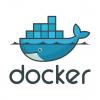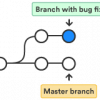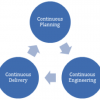Process
Articles
 |
5 Tips to Create a Secure CI/CD Pipeline The purpose of CI/CD security goes beyond identifying and remediating vulnerabilities—it also emphasizes keeping pace with other CI/CD processes. A secure CI/CD pipeline allows teams to find and fix issues without disrupting the overall CI/CD flow, achieving security without delaying or rolling back software releases. |
|
 |
5 Tips to Take Your DevOps Pipeline Beyond the Basics The goal of a DevOps pipeline is to create a continuous workflow that includes the entire application lifecycle. But too often, people focus only on the tools and automating everything, not stopping to think whether their processes could further improve performance and efficiency. Let's look at some common challenges to continuous delivery and then learn five tips for refining your DevOps pipeline and taking it to the next level. |
|
 |
How Docker Enables Agile Software Development Docker has revolutionized how software is packaged, distributed, and deployed, so it's easy to see why it has become the de facto containerization platform. But have you thought about how Docker actually makes software development, testing, delivery, and deployment more agile? Let's look at how Docker inherently supports several of the founding principles of agile software development. |
|
 |
The Agile Advantage for Last-Minute Changes Companies using heavyweight development processes manage change by limiting or locking down scope, but this has negative consequences for our products and our customers. Agile takes a different approach by recognizing the value of last-minute changes and making it inexpensive and straightforward to make changes to software, even late in the development cycle, using continuous integration. |
|
 |
5 Key Factors to Achieve Agile Testing in DevOps Part of the path to DevOps requires adoption of agile methodologies. What does it mean for testing when you switch from the traditional waterfall model, with a few long release cycles per year, to the agile model, with changes occurring every two weeks? Here are five key factors to achieve the agile software testing necessary in DevOps. |
|
 |
Agile Development: Focusing on the Health of Your Code In Scrum, the product owner and the ScrumMaster are supposed to drive sustainable development. But there's a third force missing from the formula: the health of the code itself. We often forget that our code is also a member of our team, and we have to be concerned about its health and well-being as much as any other team member. That means using practices to develop good code from the beginning. |
|
 |
Picking the Right Branch-Merge Strategy A good branch-merge strategy facilitates processes among multiple developers and is the basis for any well-functioning DevOps pipeline that uses continuous integration. Let’s explore branching strategies, merging strategies, and how you can put them together in a way that’s right for your team in order to bring quality features to production faster. |
|
 |
Why You Need Continuous Testing in DevOps DevOps is more than adopting the right set of tools; it's a cultural shift that incorporates testing at each stage of the agile project lifecycle. Continuous testing is key to unlocking this culture change because it weaves testing activities into every part of the software design, development, and deployment processes, which helps everyone involved communicate more, collaborate better, and innovate faster. |
|
 |
Focus on Agile Engineering Methods in Your Digital Transformation Organizations undergoing a digital transformation must adopt new and meaningful ways of working. For a successful transformation, in addition to agile processes, teams must also leverage agile engineering techniques and models. Continuous focus on agile engineering principles will provide a solid ground for teams to enhance their agility and deliver better software, faster. |
|
 |
The Pros and Cons of a Serverless DevOps Solution The dream of any product owner is fully customizable production software without the expense of the hardware it rests upon. While not completely free of infrastructure, serverless infrastructure significantly reduces overhead costs by abstracting away physical hosting, physical security, server maintenance, and OS patching. Here's what you need to know to decide if serverless infrastructure is right for you. |










